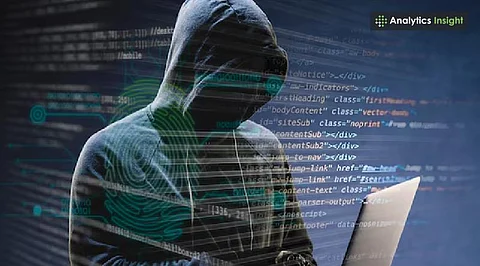

Advanced technology is enabling hackers to launch highly targeted and convincing cyberattacks.
Traditional security systems are struggling to detect AI-powered threats.
The rise of artificial intelligence in cybercrime demands stronger, adaptive cybersecurity solutions.
Artificial intelligence has undergone many changes as a technology. While it has made things easier and given smart options in various sectors, it is now being used by hackers to create sneakier and more dangerous cyberattacks.
These cyber attacks are difficult to spot and even more difficult to stop, compromising the security of companies belonging to various industries.
Hackers are using artificial intelligence to create custom cyber threats. The technology helps with understanding people’s online behavior and writing harmful messages or emails that look real. For example, AI can generate fake phishing emails that seem like they're from your bank, office, or people you know, making them believable.
Some tools can also create fake audio or video, which makes it hard to guess what's real. With deepfakes, they can copy voices and faces to fool people or systems. These tricks help cybercriminals fool not only individuals, but giant corporations, too.
Also Read: AI-Powered Deepfake Detection: Challenges, Limitations, and Future Directions
Old-school cybersecurity systems only know about past crimes. They scan for files and links that match a list of known threats. They cannot adapt to new situations, AI, on the other hand, learns from its previous experience, analyzes what didn’t work before, and tries to breach security.
To fight this, cybersecurity teams are now using AI too. AI defenses are being made to spot threats in real-time. These systems learn from the information they get, identify intruders, and act quickly. For example, if someone is trying to log in without authorized access, AI can block them or send a warning.
Also Read: Cybercrime Costs Surge 12x Faster Compared to Cybersecurity Spending
Industries like finance and health, and government websites, are the most vulnerable. They are prime targets since they have large volumes of personal information. Cybercriminals can utilize this data to access accounts or create fraudulent transactions.
Technology cannot be the sole defence mechanism. That's why it's important to be aware of online threats and get training. People need to learn how to notice suspicious accounts or websites. Even the best tools are useless if someone clicks a bad link or gives away sensitive information.
Regular training, phishing tests, and data governance can help bring the risk down. Awareness also makes people careful and alert, which is important in the fight against custom cyber threats.
Cybersecurity teams need systems that can keep up with changes.
Regular checks and threat tests help and let teams find weak spots before the hackers do. Strong passwords, two-step verification, and data protection measures are no longer considered optional but mandatory.
AI has changed cybersecurity. It gives us tools for protection, but it also helps hackers make smarter attacks. These custom attacks are fast, convincing, and hard to trace. Tech companies need to be alert and use new ways to defend themselves. Staying ahead in this fight means using both advanced tech and educating people on what to look out for.
1. How are hackers using AI in cyberattacks?
AI is being used to craft realistic phishing scams, deepfakes, and adaptive malware that evade traditional defenses.
2. Why are traditional security tools struggling against AI threats?
Old systems rely on known patterns, while AI-powered threats evolve and adapt, making them harder to detect.
3. Which industries are most at risk from AI-driven cyberattacks?
Finance, healthcare, and government sectors are top targets due to the value of their sensitive data.
4. Can AI be used to fight AI-based cyber threats?
Yes, cybersecurity teams are deploying AI tools to detect, analyze, and respond to evolving digital threats.
5. What steps can reduce the risk of AI-powered attacks?
Regular training, smart monitoring, updated tools, and strong internal policies help lower cybersecurity risks.
